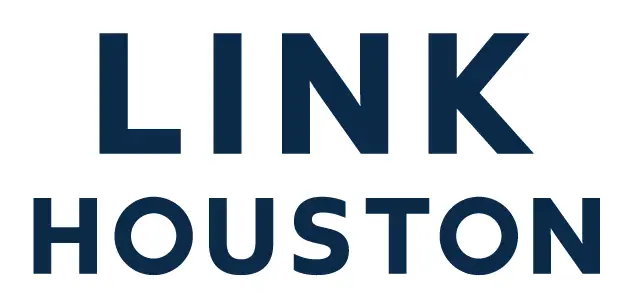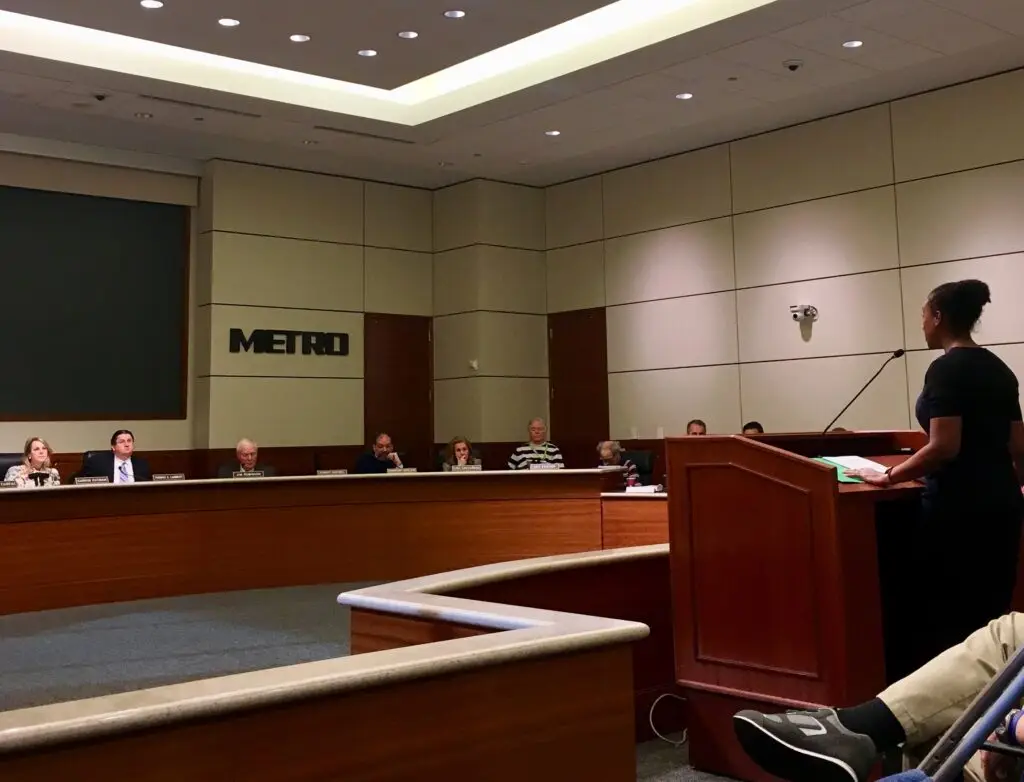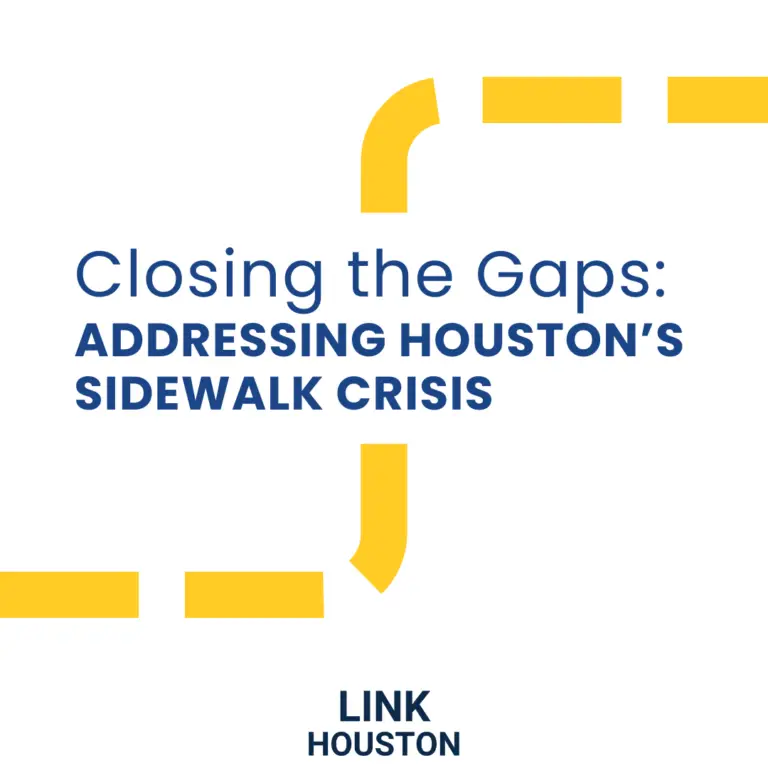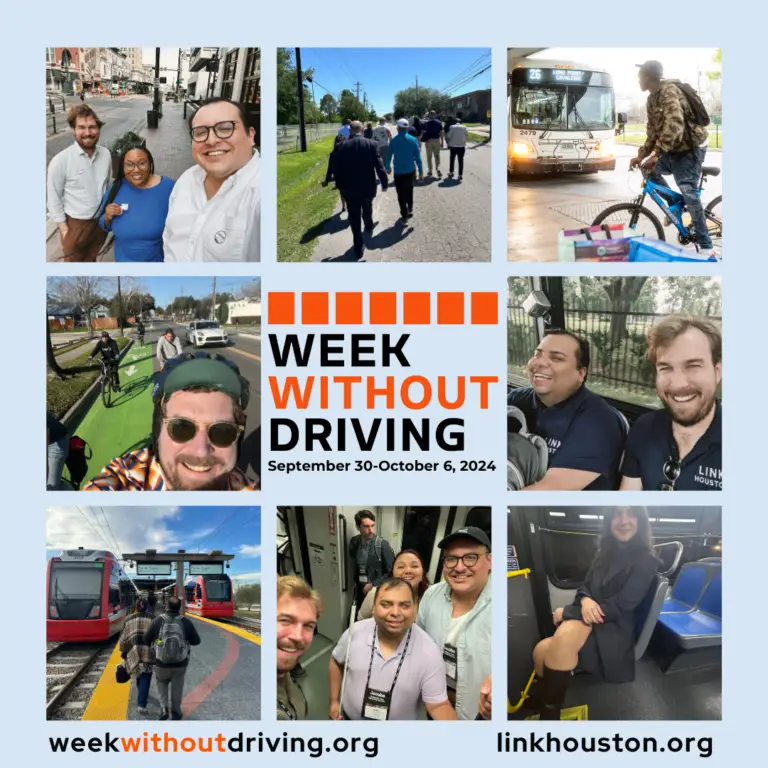The Kinder Institute’s 2018 annual survey reported that “Harris County respondents are more firmly in favor of mass transit” [61%] and that most people in the region “are seeking more opportunities for ‘walkable urbanism.’”
The time for a paradigm shift in transportation is now. We need alternatives to single-occupancy vehicles, safety, and resilience. We need to leverage the growing interest from the business community to make the region economically competitive. We need to build on the political leadership’s interest in addressing transportation disparities so that all people can access opportunity.
In LINK Houston’s outreach, we are hearing the same things: make the bus come more often, repair the sidewalk or shelter, have the bus/train run longer, and make sure the bus shows up and doesn’t leave early.
For public transit, LINK Houston is calling for a network that is: frequent, universally accessible, available (with extended span of service hours), and reliable.
METRO’s Board has already committed to these goals. Yet, I’m here today to stress frequency, accessibility, availability in span of service, and reliability because I am concerned about equity.
Let me explain.
Decisions in public transit are heavily weighted towards density and job centers. Yet, we all know Houston’s most under resourced communities (with few exceptions like Gulfton) are some of the least dense. Decades of decisions regarding the built environment, from highway construction to warehousing and industry placement, have resulted in low-density urbanization in historical communities of color.
If every public transit decision is weighted towards density, then under resourced communities will never qualify for the best that public transit has to offer; public transit will never play a meaningful role in connecting under resourced communities to destinations to access employment, education, or other opportunities. Density determines bus frequency. And frequency leads to more bodies in seats. Bodies or boardings influence decisions on span of service, shelter placement, and even maintenance of trash cans at stops.
I’ve been asked what should be the density-coverage or density-equity distribution? Where’s the data? The two are related; as long as density is the preferred metric, under resourced neighborhoods like Sunnyside, Acres Home, Independence Heights, Second Ward, Kashmere Gardens, OST/South Union, Third Ward, Fifth Ward, and the list goes on, will never measure up. Based on the density rules, Gulfton should measure up with 15,000 people per square mile – the most densely populated neighborhoods in the region, yet it doesn’t have the highest frequency bus. The 82 instead runs through Montrose, likely the most densely populated neighborhood on its route, with about 9,000 persons per square mile.
To achieve these goals, here are specific things that would lead to a more equitable local network:
For frequency:
- Return all “red” category routes to the frequent network with 15-minute or better headway
- (NOTE: There are currently18 routes in frequent network and 10 routes that are “red” but do not have frequent network-level headway designation; i.e., 51 Hardy/Kelly has a 30-minute frequency but is red)
- Extend the frequent network by converting most “blue” routes to 15-minute headway, provided the route meets ridership and equity criteria, such as:
- More than 1,500 weekday average daily riders
- More than 10 rides per vehicle revenue hour
- Higher regional average rates of households in poverty, single-headed households, seniors, or youth population
- Improve local bus frequency to minimum to 40 minutes or better (eliminating 60-minute routes or time periods)
For availability or span of service:
- Extend the span of service hours on the frequent network routes connecting under-resourced communities to 24-hour employment centers (e.g., Airports, Convention Center, Texas Medical Center (i.e., 28 OST-Wayside), etc.)
For reliability:
- Change the local network on-time performance targets from present 75% to 90%
- (NOTE: Similar to the target for METROLift)
- Eliminate schedules for routes/lines operating at 10 minutes or better frequency (e.g., Route 82)
For accessibility:
- Fulfill FY2018 commitment to universal accessibility
- Prioritize construction of bus shelters at stops with off-peak service frequency of 30 minutes or longer rather than by density/boardings; the longer you wait, the more you need a place to sit
- Decouple density/boardings from signage; place next-bus information at stops not on the frequent network or where senior population or poverty are most concentrate (these populations may have limited amounts of data to use)
Thank you.






